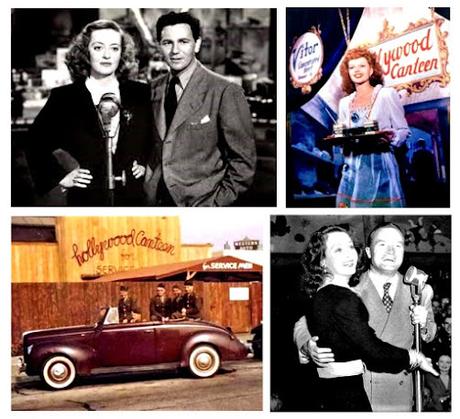
Clockwise from top: Bette Davis and John Garfield; Rita Hayworth; Hedy Lamarr and Bob Hope; GIs at the Canteen
A Very Special "Old Hollywood Haunt"
In her 1987 memoir, This 'n That, Bette Davis remembered a day not long after World War II began when fellow Warner Bros. star John Garfield sat down next to her in the studio commissary. He told her he'd been thinking about all the GIs who were then streaming through the area and said he thought Hollywood ought to do something about welcoming and entertaining them while they were in town. "I agreed," she wrote, "and then and there the idea for the Hollywood Canteen was born." Bette approached her friend and agent, Jules Stein, president and co-founder of MCA, with their plan to createa nightclub for servicemen and womenand invited him to head its financial committee.
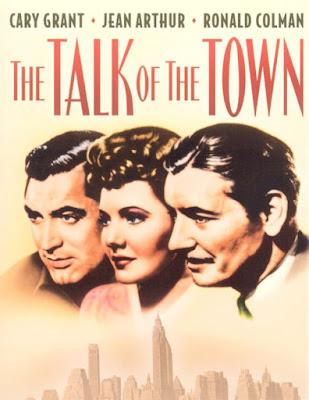
The canteen opened on October 3, 1942. That night, thousands of members of the armed services were greeted with hospitality, food and drink, dancing and entertainment provided by some of Hollywood's biggest stars. Because the club was packed to capacity through the evening, an estimated 5,000 eligible men and women had to be turned away. Bette Davis said it was so crowded that she had to crawl through a window to get in. To help fund the canteen's operating costs, bleachers had been built outside on both sides of the entrance so civilian spectators - paying $100 each - could be part of opening night and cheer guests and star volunteers as they arrived. $10,000 was raised from bleacher seat sales (about $167,000 today).
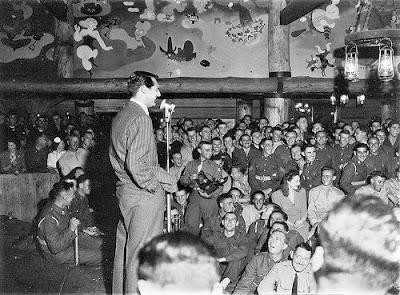
Cary Grant in the house (see mural on back wall, chandelier overhead)
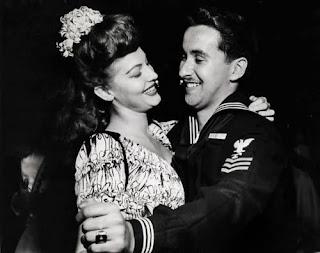
Ava Gardner and a very happy sailor
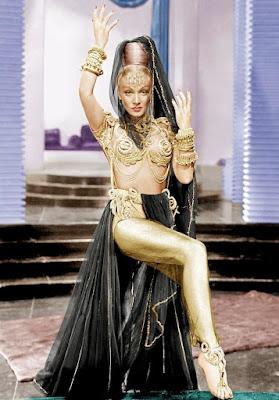
Marlene, still covered in gold paint
Hollywood and its stars were generous with more than their time. In 1943, Warner Bros. produced the all-star musical Thank Your Lucky Stars, a fundraiser featuring many of the studio's stars and contract players. Jack Warner paid $50,000 to each cast member who appeared - with top-liners including Bette, Bogie, Errol, Olivia and Ida - all of whose paychecks were gladly donated, along with box office receipts, to the canteen - bringing in a total of $2,000,000. The following year Warners produced The Hollywood Canteen, a fictionalized account of the real club, with star salaries and 40% of the box office going to the canteen. Since the weekly food bill alone cost $3,000, the organization depended on such generosity. Cary Grant's donation of a piano was also cheerfully accepted...
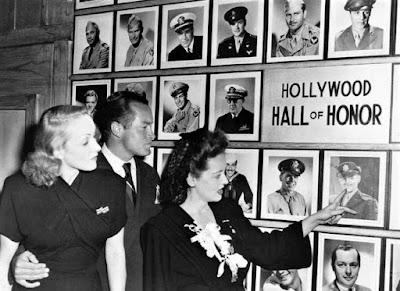
Marlene Dietrich, Bob Hope and Bette Davis survey the Hall of Honor
When the war began, several male stars were unable to serve in the military for medical reasons; Errol Flynn, Frank Sinatra, Gary Cooper and Van Johnson, to name a few. Other actors were classified as too old, like Joel McCrea, and others were given family deferments (John Wayne) or served briefly and given dependency discharges (Robert Mitchum). These men would give their valuable talent and fame in support of the troops by volunteering at the canteen, entertaining with the USO, and selling war bonds. John Garfield was among those classified 4F. It was only when he tried to enlist and was rejected that he discovered he had a heart condition. Garfield's desire to serve was one reason that drove him to co-found the Hollywood Canteen and remain deeply devoted to it. There were many other actors, though, who were able to serve and the town was justifiably proud of them. When the canteen celebrated its first anniversary, a new wall display was unveiled. The Hall of Honor was covered with photos of Hollywood luminaries serving in World War II. Among them were Clark Gable, James Stewart, Henry Fonda, Tyrone Power and Douglas Fairbanks, Jr.
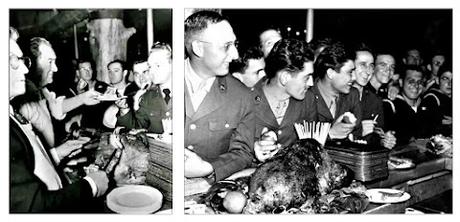
Thanksgiving at the canteen; at left, Claude Rains and Edward Arnold carve and serve
The Hollywood Canteen hustled and bustled for the duration of the war and after. On Thanksgiving Day, November 22, 1945, the club welcomed guests for the last time. It would be their first major holiday in the US since the war began for many of the attending servicemen and women, and they wouldn't be disappointed. A 10-hour stage show was headlined by comedy stars Bob Hope and Jack Benny and included appearances by Ingrid Bergman, Hedy Lamarr, James Stewart, Henry Fonda, Edward G. Robinson, Kay Kyser's band and more. Of course, a full course Thanksgiving dinner was also served.
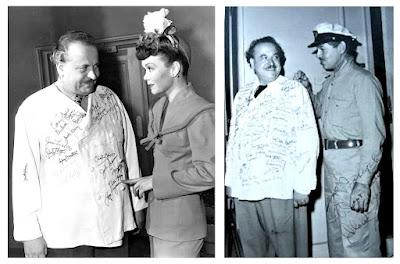
Chef Milani in his autographed jacket with Jane Wyman (left) and Clark Gable (right)
During its run, the canteen entertained 3 million members of the military. It served 9 million cups of coffee, 6 million pieces of cake, 125,000 gallons of milk and gave away 3 million packs of cigarettes. All of this was managed by nine paid staff and 600 nightly volunteers including dance hostesses recruited by Jules Stein's wife, Doris. According to Bette, the pool of regular volunteers numbered about 6,000 individuals from all areas of the film industry. Mrs. Stein had, on her own, enlisted 3,500 women into her dance volunteer pool. In the end, a surplus of $500,000 remained on the canteen's books when it closed, which Bette attributed to Jules Stein's "financial genius." This money would be donated to an array of veterans' relief funds. Bette would also heap praise on others whose commitment to the canteen whose contributions she relied upon. Along with the Steins, there was Chef Milani, a well-known Italian chef with a radio show on LA's KFWB (and later KCOP TV). Milani was in charge of canteen meals and would often base them on US regional cuisines. She remembered his "enormous" contribution in soliciting free food donations for the canteen. Director John Ford's wife, Mary, was in charge of the kitchen from the first day to the last (3,000 sandwiches were made in that kitchen daily). Kay Kyser's band played every Saturday and they never missed a night that Bette could recall, even flying in from out of town when they had to.
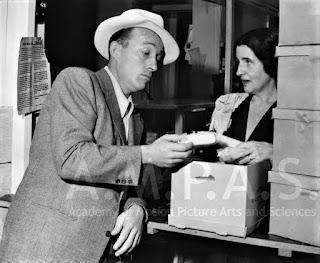
Bing Crosby and Mary Ford with sandwiches
It had been an immense undertaking that required, and got, solid and ongoing film industry support. With this, the canteen was able to provide consistently first-rate entertainment and hospitality to US and Allied members of the military throughout World War II. In her memoir, canteen linchpin Bette Davis would look back on those years with satisfaction and declare, "There are few accomplishments in my life that I am sincerely proud of. The Hollywood Canteen is one of them."
Movietone News visits the Hollywood Canteen at Christmastime
References
This 'n That by Bette Davis with Michael Herskowitz, G.P. Putnam's Sons, 1987
"Canteen Muralized," Disney History, April 2, 2018
"Thanksgiving at the Hollywood Canteen," Comet Over Hollywood, Nov. 23, 2017
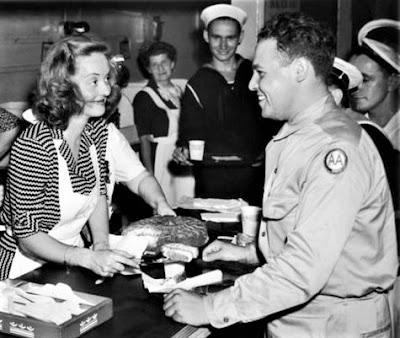
Bette Davis serving the troops at the Hollywood Canteen

